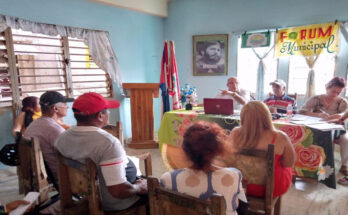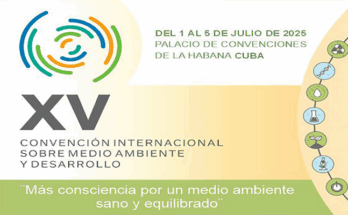The immense talent and initiative of the Cuban people is displayed every day of our lives in any field and even constitute forms of economic value creation. Decades of a brutal siege by the most powerful and closest power in the world and unsuccessful adaptations of economic models foreign to a functional socialism have taught us. Happiness and even material well-being can be achieved by applying individual and collective talent in any aspect of life. A clear example of this is that many needs of daily life that the formal commercial system does not satisfy in any way are covered by informal exchanges and trade, although often more harm than good.
The most visible part of this realization of Cuban talent is our modest system of “knowledge creation”. It is known as the National System of Science, Technology and Innovation (SNCTI). A majority of it is in the universities, institutions of the biotechnological and pharmaceutical sector, and in some branches of industry and agriculture. It can be extraordinarily effective and innovative as demonstrated by the Cuban vaccines against COVID, which competitively surpassed many of the world’s greatest achievements in this regard.
For many years our scientific policy has been based on the utilitarian vision of scientific research. All the documents that have postulated it include the concept that the results should be introduced into production and serve the economy and society. However, there are many that have demonstrated a potential usefulness for the creation of economic value and welfare of Cubans who have never had any opportunity to achieve the possibilities announced and pursued by their researchers. In fact, this nodal problem is the current focus of attention of the management of the ministry in charge of these missions.
Thus, both the creativity and initiatives of everyday life in our society and many scientific results that can produce economic value suffer from a disconnect between the creation of specific knowledge and the creation of economic value. Such results appear attractive for use in a dynamic economy but never manage to participate in it. It may even happen that a similar product from abroad is soon presented as an import.
Our current economic design responds to a conceptually affected planning where the evaluation of goods and services is uncertain due to the lack of a single monetary reference and where competition is not considered as a dynamic element. These two factors, at least, are discouraging for the entities that should be entrepreneurs, the companies in good Spanish, to demand results from the creators of knowledge in the SNCTI.
This disconnection can also manifest itself in some form in countries of proven economic efficiency, but on a different, more complex scale. A large company tends to concentrate on the most pressing aspects of its competitiveness and may miss seemingly small discoveries. Knowing that this may be the case, they devote a significant part of their economic profits to what is known as venture capital, investing it in proposals from knowledge creators that could be promising. If nine out of ten fail, it is not so important, because the successful one more than covers the losses and can yield fabulous profits. They thus find a solution to the disconnection with small ventures, companies, to develop promising products.
These companies that emerge from universities and research centers with start-up capital provided by large producers are often called “spinoffs” from the knowledge creation sector. They are usually small and their management has administrative and scientific components in appropriate proportions to achieve the greatest possible success.
Is this not a completely understandable way of proceeding in a country where the economy and the social surplus value should belong to all the people? Something like this could constitute a solution to promote those novel and promising results of the SNCTI that have not been in demand by the value-creating entities in our economic scheme.
There is even a beautiful example in our history of science and technology: the Cuban computer. Let’s tell it quickly: At the end of the 60s of the last century the irruption of computers in the social and economic life of the world was as attractive and promising as that of artificial intelligence in our days. Fidel was a paradigmatically revolutionary leader and it somehow reached him that it was possible to make a Cuban computer. And not just any computer. It was possible to make one that emulated one of the most modern computers of the time, such as the American PDP8. Several entrepreneurs and revolutionaries appeared on the scene, among them two professors from the Faculty of Technology of the then complete University of Havana (UH).
One of them, Eng. Luis Carrasco, was an excellent organizer and knowledgeable on the subject. The other was Eng. Orlando Ramos, a scholar and scholar of computer technologies from the basic sciences. Between the two of them, the participation of a plethora of talented young people from various faculties of the UH, and the decisive and effective support of the government, the “Digital Research Center” (CID) of that university was created. A prototype of the Cuban computer was designed and built there, whose effective version was named CID-201B. The LEAL (“Lenguaje Algorítmico”) was also generated, which was a new and probably unprecedented programming language, because its instructions were in Spanish. The Cuban computer played chess twice with Fidel and always beat him. The subsequent history is full of lights and some shadows, but it certainly was a landmark of reference of our science and our economy.
Wasn’t the CID a paradigmatic case of what today would be a “MSME” or “spinoff” to associate the creation of knowledge with the creation of value? The creation of an “innovation MSME” can be a successful way out if it is to carry forward a novel and promising scientific or technological result. It would then be given the opportunity to flourish and become a value multiplier. This is a path that could be very well traveled in our scientific and economic policies.
Certainly, we need dynamism, less bureaucracy, decentralization, investment capital, preferably public, people who know what they want to produce and those who know or learn how to manage the processes. But all these are ingredients that can still come together in our town with the right incentives. It is also necessary, of course, to “change what must be changed” and also to exercise the revolutionary thinking and doing of the owner of this phrase. We already had it when vaccines were created a few years ago, why don’t we follow that path?
(Source: cubadebate




